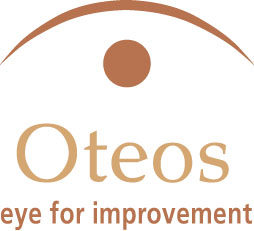How Does Trauma Happen?
A few years ago, if you asked me about trauma in the workplace, I would have thought of a major incident akin to the planes crashing into the Twin Towers or a disgruntled employee opening fire on colleagues. Fortunately for all of us, these major types of traumatic events in the workplace are rare. More often, trauma is caused by working in a persistently toxic work environment. This type of toxicity is costly to the individual as well as the organization.
Unfortunately, I worked in a toxic work environment for the past two to three years. It wasn’t always toxic. In fact, it was one of the best places I had ever worked until management at three levels changed in rapid succession. When circumstances afforded me the opportunity, I finally left the organization. The choice came with an enormous amount of guilt – guilt that I was leaving the patients that meant so much to me, but even more was the guilt for the work-family that I left behind. I had spent the past two years fighting for my team at a cost to me professionally as well as mentally and emotionally. By the time I left the organization, I was damaged and truly felt like a failure. I was unable to successfully lead my team through some very difficult times and, after twenty years of service, felt like I had been dishonorably discharged without actually being fired. Feeling completely defeated and like I had let my work family down, I walked away.
three years. It wasn’t always toxic. In fact, it was one of the best places I had ever worked until management at three levels changed in rapid succession. When circumstances afforded me the opportunity, I finally left the organization. The choice came with an enormous amount of guilt – guilt that I was leaving the patients that meant so much to me, but even more was the guilt for the work-family that I left behind. I had spent the past two years fighting for my team at a cost to me professionally as well as mentally and emotionally. By the time I left the organization, I was damaged and truly felt like a failure. I was unable to successfully lead my team through some very difficult times and, after twenty years of service, felt like I had been dishonorably discharged without actually being fired. Feeling completely defeated and like I had let my work family down, I walked away.
There were many factors that contributed to the hell that I called work. First and foremost was the lack of leadership at the managerial level. Bullying behavior was not only supported but encouraged by the management. This created a work floor with snitches that were more than happy to report any infraction, regardless of how small, to the manager. She then took great pleasure in belittling staff, yelling, threatening, and emulating basic bullying behavior. Bullying alone can contribute to a toxic environment, but when coupled with narcissistic, manipulative, and condescending management, workplace trauma is guaranteed.
Cost to the Organization
The trend in recent years is organizations asking more from their staff with fewer resources. While organizations may feel this increases productivity, it actually increases stress among the team, causing symptoms of depression, anxiety, and social isolation leading to an increase in sick leave. In fact, it’s estimated that 60% of sick leave is due to stress-related illnesses, in turn, having a significant impact on the bottom line. A study in Canada showed that unaddressed mental illness in the workplace costs businesses more than $50 billion in lost productivity each year. Interestingly, a third of managers have no formal support or resources to support their employees.
Eventually, as in my case, when employees are given the opportunity, they will leave the toxicity. Staff turnover is challenging, but it is also incredibly expensive. For every employee that leaves, someone new must be recruited and trained to fill the position, not to mention the lost productivity during the transition period. The cost of one employee leaving an organization is upwards of $20,000.
Cost to the Employee
Repeated exposure to a toxic work environment can cause a variety of issues. According to clinical psychologist Dr. L. Michael Tompkins, bullying in the workplace can be emotional abuse and can cause the symptoms and/or diagnosis of PTSD. Employees can experience a loss of problem solving ability , may be poor at making rational decisions, and may take risks that they normally wouldn’t and consider it normal behavior. Unfortunately, it is not uncommon to hear of suicide as a result of repeated exposure to a toxic work environment – the ultimate cost to the employee.
So Now What?
When CBC News published an article in November 2019, “Workplace Mental Health Programs Deliver Healthier Bottom Lines”, all I could think was ‘no kidding’. We know that for every dollar spent on mental health in the workplace, the return is $1.62. This makes great business sense. But having worked in Primary Health Care for nearly fifteen years, my mind tends to focus on prevention. How can we create environments at work that minimize the stress that creates the anxiety and depression that so many employees face?
Relationships Matter
A key to a healthy workplace is the relationships that are developed among colleagues and with management. If an employee is absent, a caring, empathetic manager should reach out to see how they are doing, if they can support them in any way and to provide them the opportunity to remain an integral part of the team while they are off, if they are physically and mentally able to. Employees are the most critical asset that a business has and as such, need to be cared for. Developing relationships with employees should remain a priority.
Education
Management must have the basic skills to lead their people. They need to be trained to identify and manage trauma among their staff. The key to mental support begins with transparent and supportive relationships between the manager and the staff. This helps management with early identification of mental and stress-related difficulties. Organizations need to invest in the mental health of their staff, going beyond the basic employee assistance programs. Considering that we spend the majority of our day at work, it’s essential that everyone has a safe environment to work in. Organizations should encourage the development of relationships between staff and encourage what I call the “work family”. This allows for more support and increased resilience to stress. Encouraging self-care such as ensuring break times, adequate lunch breaks, encouraging physical activity, and stress management are all ways the employer can help build on an individual’s resilience. Empowering employees to develop and grow as individuals and as professionals only strengthens this resilience.
Organizations that invest in their employees and foster an environment that is safe, supportive, and encourages resiliency will find that the payoff is far greater than the investment. Happy, resilient employees are more productive and will give 100% knowing that the organization has their back.



